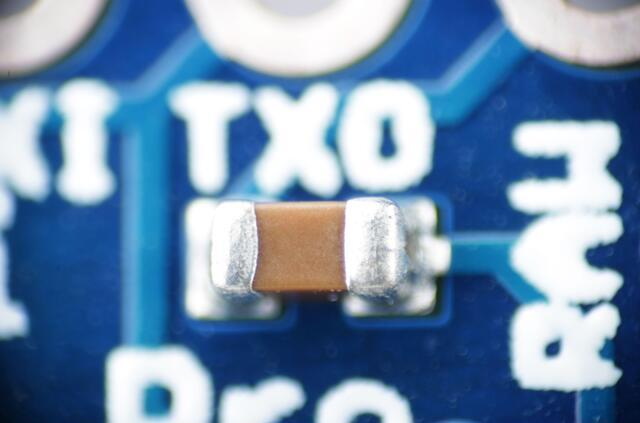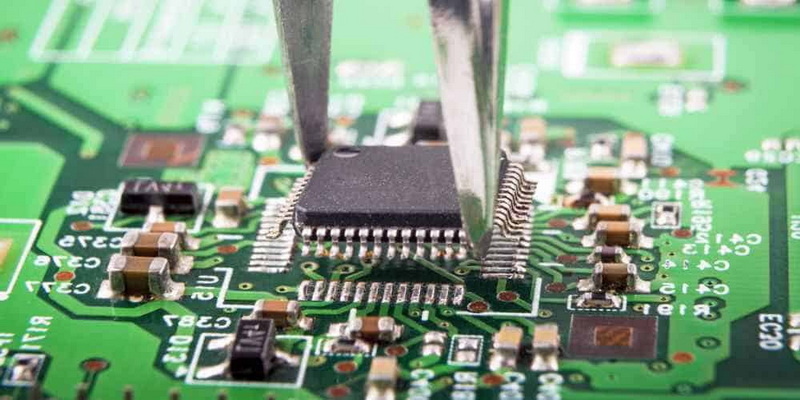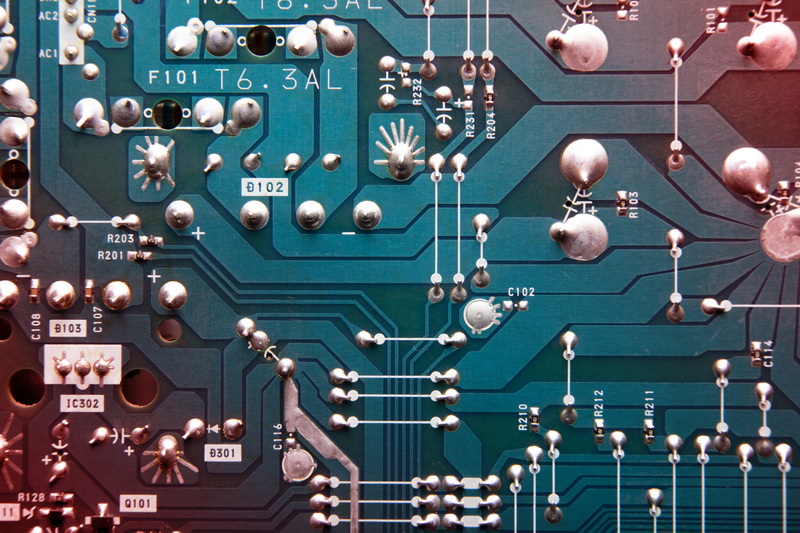Content Menu
● Introduction to SMT Stencil Cleaning
>> Importance of Stencil Cleaning
● Benefits of Automated SMT Stencil Cleaning
>> Efficiency and Consistency
>> Reduced Labor and Environmental Impact
>> Improved Quality and Yield
● Types of Automated Stencil Cleaning Machines
>> Pneumatic Stencil Cleaning Machines
>> Electric Stencil Cleaning Machines
>> Ultrasonic Stencil Cleaning Machines
● Comparison with Manual Cleaning
● Best Practices for Automated Stencil Cleaning
● Integration with Industry 4.0 and Smart Manufacturing
● Future Developments in Automated Stencil Cleaning
● Conclusion
● FAQs
>> 1. What are the primary benefits of automated SMT stencil cleaning?
>> 2. How does automated stencil cleaning compare to manual cleaning in terms of cost?
>> 3. What types of solvents are commonly used in automated stencil cleaning?
>> 4. How does automated stencil cleaning impact worker safety?
>> 5. Can automated stencil cleaning machines be integrated into existing production lines?
● Citations:
Automated SMT (Surface Mount Technology) stencil cleaning is a crucial process in the electronics manufacturing industry, particularly in the production of printed circuit boards (PCBs). The cleanliness of stencils directly affects the quality and reliability of the final product, as any residue or contamination can lead to defects in solder paste application and, consequently, in the assembly process. In this article, we will delve into the benefits of automated SMT stencil cleaning, exploring its advantages over manual methods and its role in enhancing production efficiency and product quality.

Introduction to SMT Stencil Cleaning
SMT stencil cleaning involves removing solder paste, adhesives, and other residues from stencils used in PCB assembly. Stencils are precision tools with apertures that define where solder paste should be applied on a PCB. Over time, these apertures can become clogged with dried solder paste, which can lead to printing errors if not properly cleaned.
Importance of Stencil Cleaning
Thorough stencil cleaning is essential for achieving optimal print quality and preventing defects such as insufficient solder paste deposits, solder balls, and inconsistent paste volumes. These issues can significantly reduce the yield of the assembly process, leading to increased costs due to rework and potential delays in production. Moreover, the quality of stencil cleaning directly impacts the reliability and performance of electronic devices, making it a critical step in ensuring that products meet stringent quality standards.
Benefits of Automated SMT Stencil Cleaning
Automated stencil cleaning offers several advantages over manual cleaning methods, which are often time-consuming and may not effectively remove all contaminants.
Efficiency and Consistency
1. High Throughput: Automated systems can process stencils much faster than manual methods, making them ideal for high-volume production environments. This efficiency ensures that stencils are cleaned consistently and quickly, reducing downtime and increasing overall production capacity.
2. Reproducibility: Automated cleaning ensures that each stencil is cleaned to the same standard, reducing variability in the cleaning process. This consistency is crucial for maintaining high-quality assembly outputs.
Reduced Labor and Environmental Impact
1. Labor Reduction: Automated systems minimize the need for manual labor, which can be intensive and expose workers to harmful chemicals. By automating the cleaning process, manufacturers can reduce labor costs and improve worker safety.
2. Environmental Benefits: Many automated stencil cleaning machines are designed to recycle cleaning agents, reducing solvent consumption and waste. This approach not only saves costs but also contributes to a more environmentally friendly manufacturing process.
Improved Quality and Yield
1. Enhanced Print Quality: Automated cleaning ensures that stencils are thoroughly cleaned, which is critical for achieving precise solder paste application. This precision reduces defects such as solder balls and insufficient paste deposits, leading to higher assembly yields.
2. Extended Stencil Life: Regular and effective cleaning helps maintain the integrity of the stencil, extending its lifespan and reducing the need for frequent replacements. This can lead to significant cost savings over time, as stencils are expensive to produce and replace.
Types of Automated Stencil Cleaning Machines
There are several types of automated stencil cleaning machines available, each with its own advantages.
Pneumatic Stencil Cleaning Machines
- Operation: These machines use compressed air as the energy source, eliminating the need for electricity and reducing fire hazards.
- Benefits: They are environmentally friendly, feature a sealed cleaning method that reuses cleaning agents, and minimize worker exposure to solvents.
Electric Stencil Cleaning Machines
- Operation: These machines rely on electrical power and are often more versatile in terms of cleaning options.
- Benefits: They can handle a wide range of cleaning tasks but may require more maintenance compared to pneumatic models.
Ultrasonic Stencil Cleaning Machines
- Operation: These machines use ultrasonic vibrations to remove contaminants from stencils.
- Benefits: They are highly effective at cleaning small apertures, require minimal solvent, and are cost-effective compared to fully automatic cleaners.

Comparison with Manual Cleaning
Manual cleaning methods, while economical for low-volume production or prototype runs, have several drawbacks compared to automated systems:
- Time-Consuming: Manual cleaning is labor-intensive and can be slow, especially for large or heavily soiled stencils.
- Inconsistent Results: The quality of manual cleaning can vary significantly depending on the technique and materials used.
- Health Risks: Workers are exposed to cleaning solvents, which can pose health risks if not handled properly.
Best Practices for Automated Stencil Cleaning
To maximize the benefits of automated stencil cleaning, manufacturers should follow best practices:
- Regular Maintenance: Ensure that cleaning machines are properly maintained to prevent malfunction and maintain cleaning efficiency.
- Solvent Selection: Choose solvents that are compatible with the solder paste and stencil materials to avoid damage.
- Training: Provide operators with training on how to use automated cleaning systems effectively.
Integration with Industry 4.0 and Smart Manufacturing
The integration of automated SMT stencil cleaning with Industry 4.0 technologies offers additional benefits. By incorporating sensors and data analytics, manufacturers can monitor cleaning processes in real-time, optimize cleaning parameters, and predict maintenance needs. This integration enhances the efficiency and reliability of the cleaning process, aligning with the principles of smart manufacturing.
Future Developments in Automated Stencil Cleaning
As technology continues to evolve, we can expect to see advancements in automated stencil cleaning systems. Future developments may include more sophisticated solvent recycling systems, improved ultrasonic cleaning technologies, and enhanced integration with other manufacturing processes to create seamless production workflows.
Conclusion
Automated SMT stencil cleaning is a vital component of modern electronics manufacturing, offering significant advantages over manual methods in terms of efficiency, consistency, and environmental impact. By adopting automated cleaning systems, manufacturers can improve product quality, reduce production costs, and enhance worker safety. As the electronics industry continues to evolve, the importance of reliable and efficient stencil cleaning processes will only grow.

FAQs
1. What are the primary benefits of automated SMT stencil cleaning?
Automated SMT stencil cleaning offers several key benefits, including increased efficiency, consistency in cleaning quality, reduced labor costs, and improved environmental sustainability. It also enhances product quality by ensuring thorough removal of contaminants, which leads to higher assembly yields.
2. How does automated stencil cleaning compare to manual cleaning in terms of cost?
While manual cleaning can be economical for small-scale operations, automated systems are more cost-effective for high-volume production due to their efficiency and ability to reduce labor costs. Additionally, automated systems can extend stencil life and reduce waste, further lowering overall costs.
3. What types of solvents are commonly used in automated stencil cleaning?
Common solvents used in automated stencil cleaning include isopropyl alcohol, acetone, and ethanol. The choice of solvent depends on the type of solder paste and stencil material to ensure compatibility and prevent damage.
4. How does automated stencil cleaning impact worker safety?
Automated stencil cleaning significantly improves worker safety by minimizing exposure to harmful solvents and reducing the physical demands of manual cleaning. This reduces the risk of chemical exposure and related health issues.
5. Can automated stencil cleaning machines be integrated into existing production lines?
Yes, many automated stencil cleaning machines are designed to be compact and versatile, allowing them to be easily integrated into existing production lines. This flexibility makes it easier for manufacturers to adopt automated cleaning without major disruptions to their workflow.
Citations:
[1] https://www.zestron.com/en/know-how/applications-analytic/stencil-cleaning
[2] https://www.alibaba.com/showroom/smt-stencil-cleaning-paper.html
[3] https://seikausa.com/electronics-mfg-equipment/quality-assurance-products/sawa-ultrasonic-portable-stencil-cleaners/benefits-ultrasonic-cleaning
[4] https://www.youtube.com/watch?v=rCivj205htA
[5] https://www.alibaba.com/showroom/smt-stencil-cleaning-roll.html
[6] https://silmantech.com/classification-and-advantages-of-stencil-cleaning-machines/
[7] https://www.zestron.com/my/know-how/applications/stencil-cleaning
[8] https://www.zestron.com/usa/en/applications/smt/stencil-cleaning




















